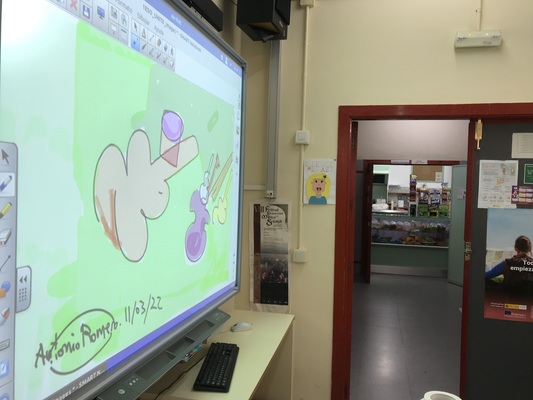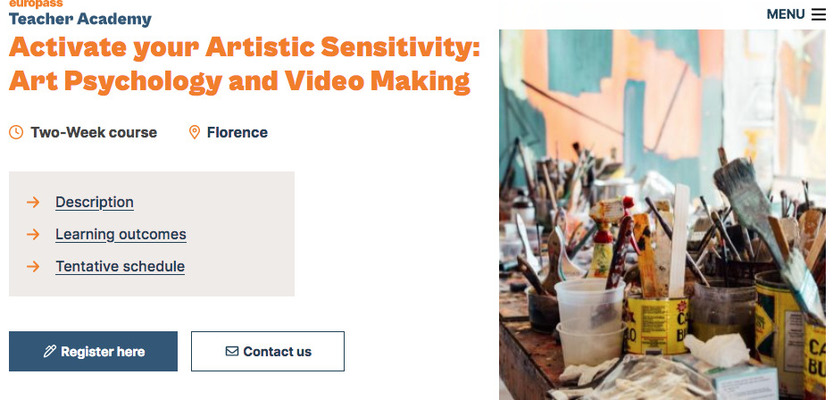
Basic data:
About Florence:
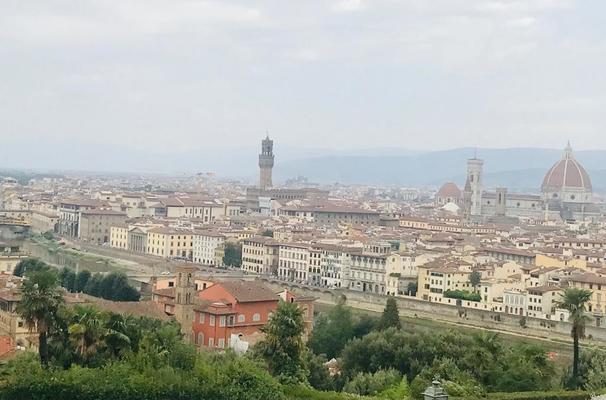
Florence (Italian: Firenze) is a city in north-central Italy, the capital and most populous city of the metropolitan city of the same name and of the region of Tuscany, of which it is the historical, artistic, economic and administrative centre. It has about 378 239 inhabitants and is the centre of a metropolitan area of about 1.5 million inhabitants.
Capital of Italy between 1865 and 1871 during the Italian Unification, in the Middle Ages it was an important cultural, economic and financial centre. It was at the height of its splendour after the establishment of the Grand Duchy of Tuscany under the rule of the Medici dynasty.
Florence is the urban centre where the artistic movement known as the Renaissance originated in the second half of the 14th century and is considered one of the cradles of world art and architecture as well as one of the most beautiful cities in the world. Its historic centre was declared a World Heritage Site in 19823 and is home to medieval and Renaissance works such as the dome of Santa Maria del Fiore, the Ponte Vecchio, the Basilica of Santa Croce, the Palazzo Vecchio and museums such as the Uffizi, the Bargello and the Galleria dell'Accademia, which houses Michelangelo's David.
From:https://es.wikipedia.org/wiki/Florencia
About Antonio Romero, teacher who has carried out the mobility:
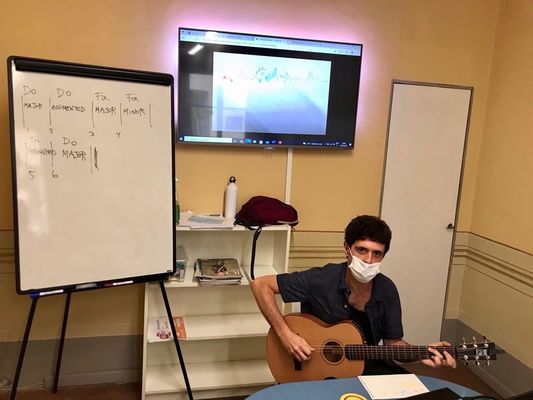
Music teacher at ESO (Educación Secundaria Obligatoria). IES Ángel de Saavedra, Córdoba (Spain). Bilingualism programme in English. Teacher participating in Erasmus+ programmes. Coordinator of the k101 project. Jazz musician, occasional performer. Committed to public education. Cheek my public profile on eTwinning and/or on my ESEP profile.
Below, the presentation given by the teacher at the beginning of the course. Click on the image to view it.
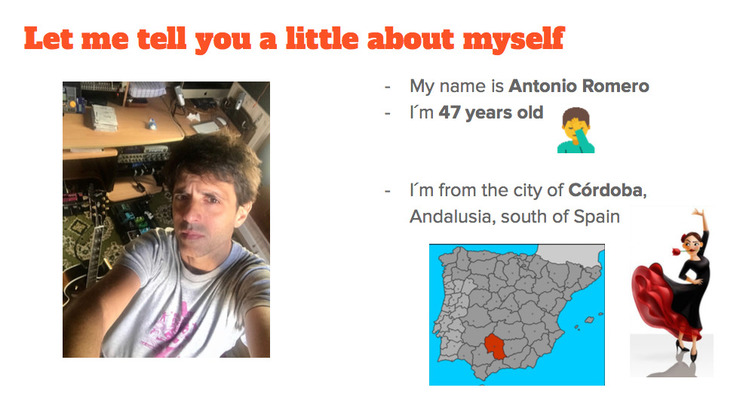
About the course:
Module 1: "Active Art
The course was structured in two modules of one week each. On the one hand, the first week was given by Professor Robin DeSanctis, in which she worked on aspects such as: art and history, the Montesori method of education through art, philosophy and aesthetics of art, art and special educational needs, design of activities for students with specific educational needs or the UDL framework of learning (Universal Desing Learning) under the heading of "active art".
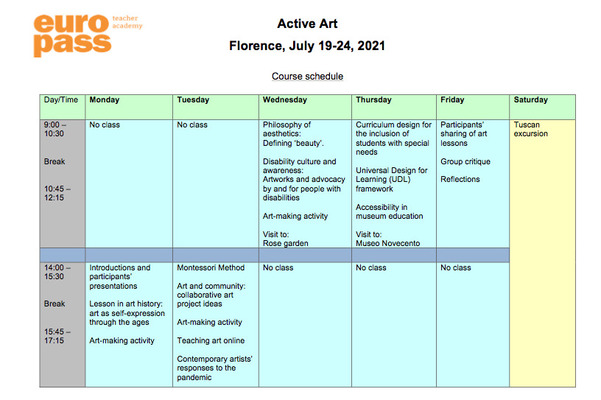
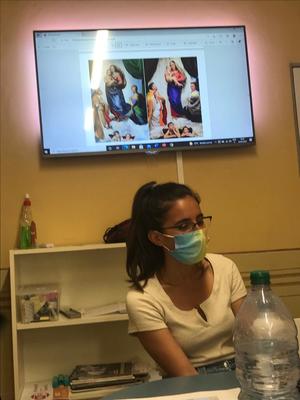
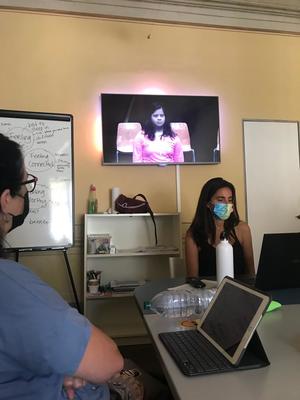
During this module the participants also made a visit to the Novecento Museum, an excursion to draw outdoors using techniques that facilitated the understanding of the difficulties of pupils with specific or special educational needs.
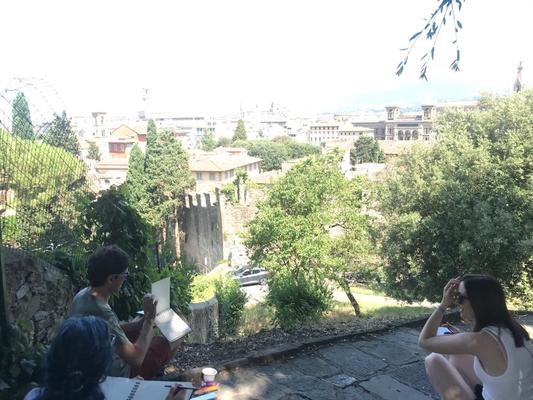
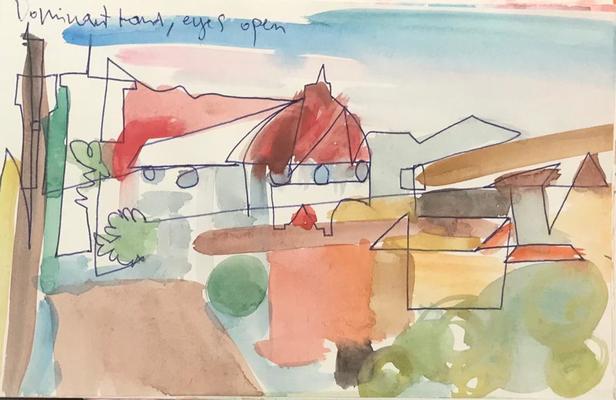
The participating teachers had to give a practical lesson applying the acquired knowledge to their fellow students. Antonio Romero presented a lesson on "synaesthesia" which dealt with the relationship between sounds and colours and shapes. To see the full presentation, click on the image.
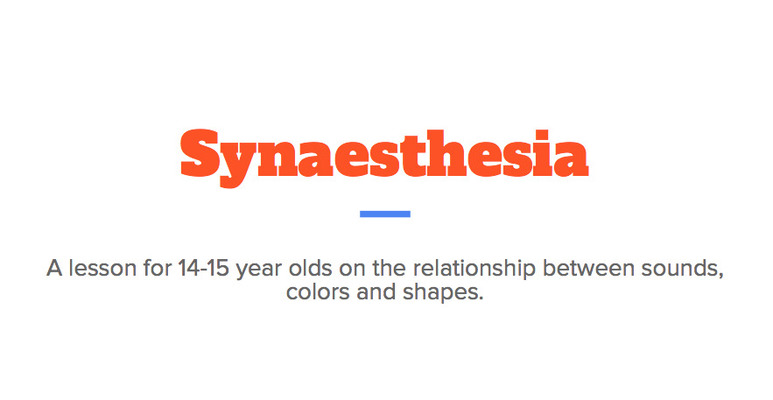
Module 2: "Video Making":
Taught by Professor Riccardo Manni, this module focused on analysing different video formats, video streaming platforms, video with OBS, Ted Video, Ed. Puzzle, Canva and Stop Motion, all geared towards their applications in the classroom.
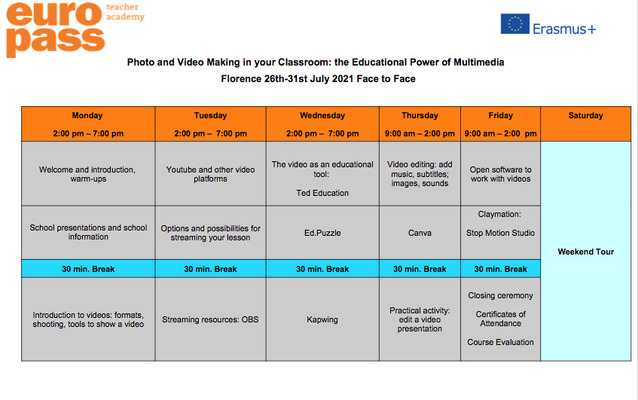
As a presentation, the participants had to show some of their video works made for educational purposes in the past. Antonio Romero showed the following video made during the confinement (March 2020) based on a didactic unit with students from 1st and 2nd ESO:
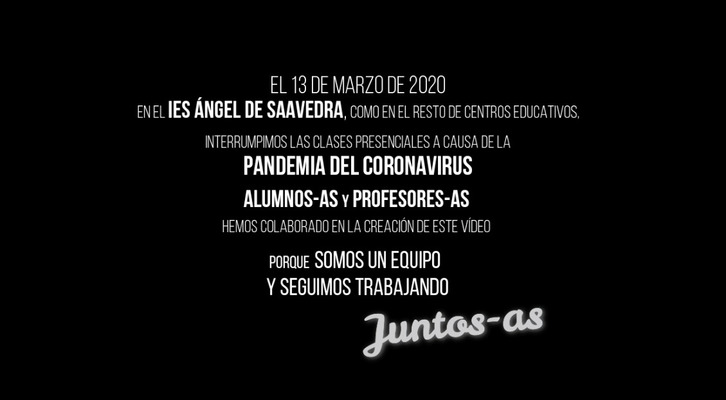
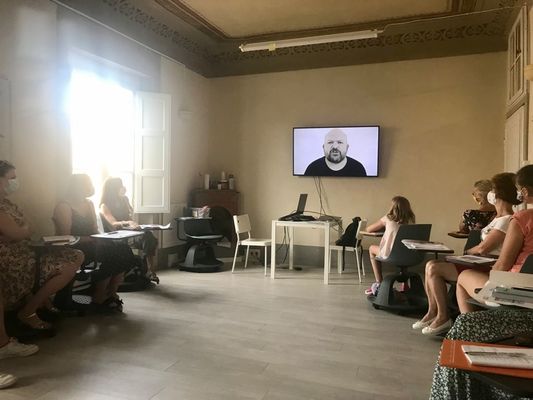
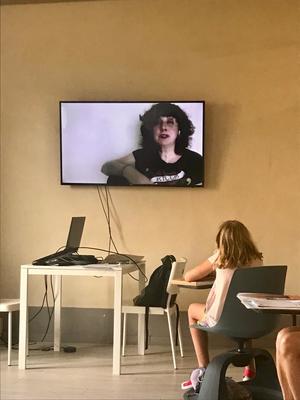
As a final practice of this second module, a video had to be recorded and edited using the tools and resources covered in class. Antonio Romero edited the following work, which was recorded and edited during the same session and presented later (the same day) in class. The work was done as a team with two colleagues from Talavera and a teacher from Budapest:
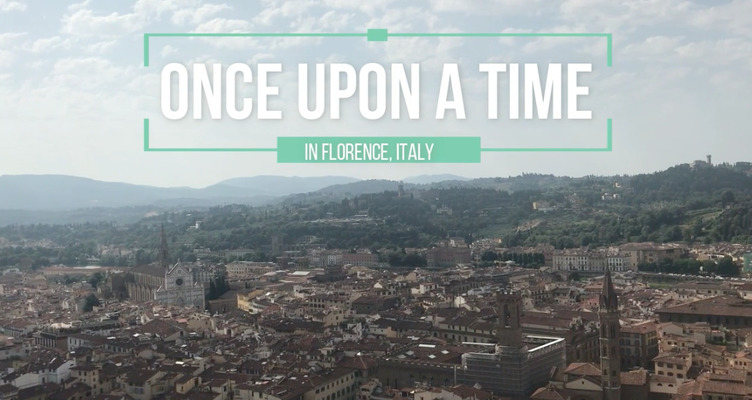
Cultural activities in the context of the course:
There were several. In addition to the visit to the Museo Novecento with Professor DeSanctis, Europass organised two guided cultural walks in the city. Furthermore, participation in the course included the right to attend a full-day cultural tour of Tuscany (with stops in Pissa, Siena and Sant Gimignano), as well as a visit and lunch in a traditional wine cellar.
These activities were a great opportunity to share impressions and ideas in a relaxed, multicultural and stimulating context with Erasmus teachers from other schools and countries.
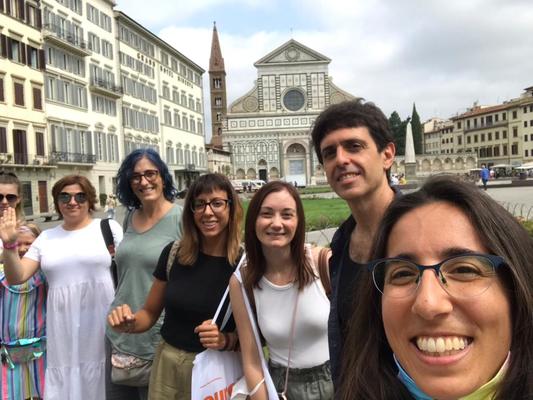
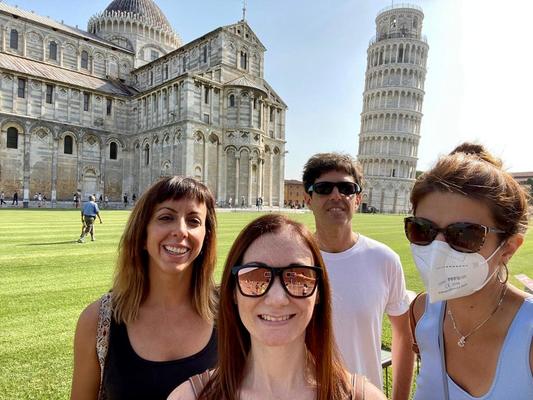
Overall assessment of mobility:
In this section, I will speak in first person. I (Antonio Romero) consider that the course and the experience has been very enriching, and it has been so on several levels. The contents have led to significant learning and experiences that will undoubtedly affect my classes, especially the classes of Professor DeSanctis. The second module, video editing, has been interested in terms of the knowledge of new tools in video processing and their potential application in the classroom, especially OBS.
I would also like to highlight the importance of the fact that both modules have been developed in exquisite English by the speakers, which I appreciate and which helps me to reinforce this competence (I work in the bilingual programme 100% of my teaching time).
Finally, I would like to highlight that the cultural visits have been a fundamental element in the mobility, they have provided it with a European and multicultural dimension that I also appreciate very much: in this context I have met and shared learnings with colleagues who develop inspiring work in Poland, Hungary (as well as experiences of innovative Spanish centres).
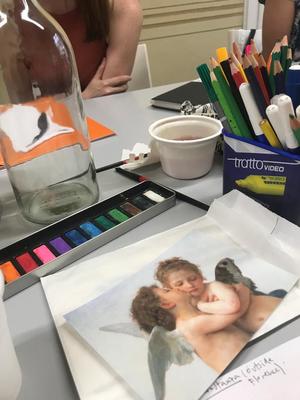
Transfer to the classroom (of the course's learnings):
It is difficult to summarize how these lessons and experiences have materialized in my classes. As an example, I will leave here a brief description of one of the activities that I have carried out during the academic year 2021-2022 with the students of the 1st year of ESO, in the subject of Music (bilingual program, in English).
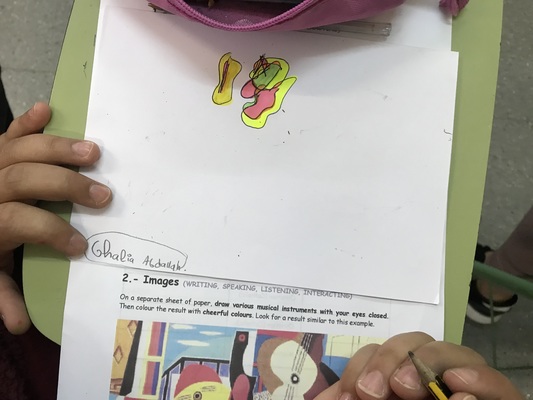
The activity is part of the "Images" section of our regular worksheet. Students had to imitate the contemporary language of modernist painters such as Matisse and Juan Gris. To do this, they drew various musical instruments with their eyes closed, following the instructions of the teacher (in English).
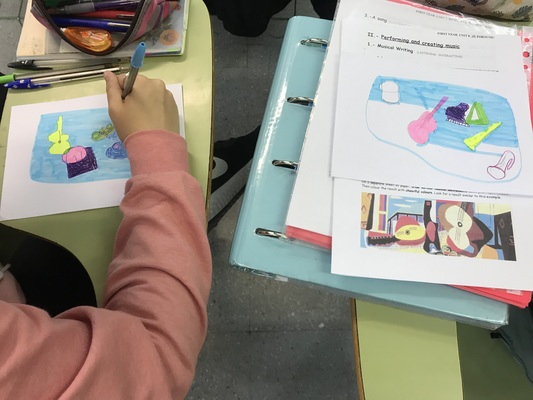
With this type of activity, we encourage active listening (in English) and put students in the shoes of their visually impaired peers.
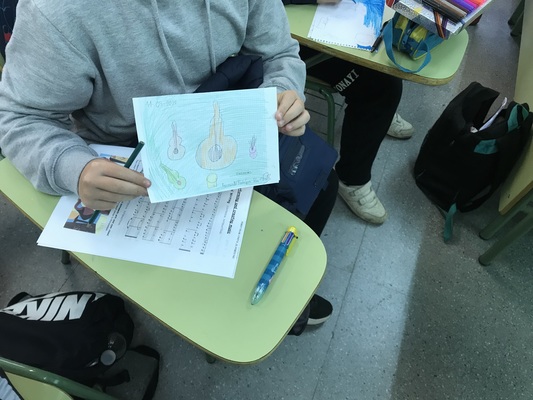
The teacher carries out the activity with them while explaining and sharing the sensations experienced. The activity concludes with a discussion on contemporary art and disability, explaining the importance of multiple skills and the essential values of integration and empathy.
